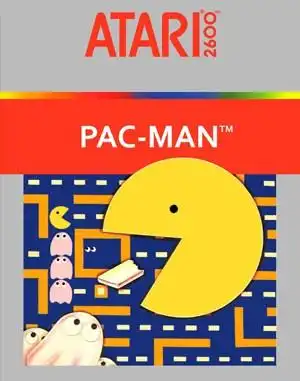That unmistakable sound – the rhythmic waka waka of a hungry yellow circle navigating a maze, pursued by colorful ghosts. For millions around the world, it instantly conjures up memories of dimly lit arcades, sticky floors, and the thrill of chasing that high score. More than just a game, Pac-Man is a cultural phenomenon, a true icon of the digital age that continues to capture hearts decades after its debut.
But what is it about this simple maze game that gave it such incredible staying power? Let's take a trip down memory lane and explore the enduring magic of Pac-Man.
The Birth of an Arcade Legend
Released by Namco in Japan on May 22, 1980, Pac-Man wasn't like the space shooters dominating arcades at the time. Created by Toru Iwatani, the game was designed to appeal to a wider audience, including women, with its cute characters and less violent premise. The goal was simple: eat all the dots in a maze while avoiding four ghosts – Blinky, Pinky, Inky, and Clyde – each with their own distinct "personality" or movement pattern. Eating a power pellet temporarily turned the tables, allowing Pac-Man to gobble up the ghosts for bonus points.
This unique concept, combined with intuitive controls and charming design, was a recipe for global success.
Why We Fell Under Its Spell
Pac-Man wasn't just popular; it was an absolute sensation. The early 1980s were gripped by "Pac-Man Fever." Why?
- Approachability: Easy to learn, hard to master. Anyone could pick up the joystick and understand the goal.
- Unique Characters: The ghosts weren't just random enemies; their different behaviors (one chases, one tries to ambush, two are a bit more random) added depth players could learn. Jamey Pittman's famous "Pac-Man Dossier" later broke down their complex AI, revealing the hidden genius beneath the surface.
- The Thrill: The constant tension of being chased, punctuated by the triumphant power pellet reversal, created an addictive gameplay loop.
- Sound Design: The iconic sounds are instantly recognizable and added to the game's personality and urgency.
It was an experience that transcended typical arcade fare, creating a genuine cultural moment.
Beyond the Arcade Cabinet
The "Pac-Man Fever" wasn't confined to arcades. It exploded into a merchandising frenzy unlike anything seen before for a video game character.
- Merchandise Mania: From lunchboxes and bedsheets to board games and breakfast cereal, Pac-Man was everywhere. If you grew up in the 80s, you likely owned something Pac-Man branded.
- Ports and Variations: While home console ports like the Atari 2600 version were often simplified and less accurate than the arcade original, they brought the game into living rooms and were loved despite their flaws. The Coleco tabletop mini-arcade version was another coveted item for many kids.
- Cultural Impact: Pac-Man starred in a Saturday morning cartoon and even had a hit pop song ("Pac-Man Fever" by Buckner & Garcia). It cemented video games as a major force in popular culture.
The character became synonymous with video games themselves, a universal symbol recognized across generations.
Pac-Man Today: Waka Waka Continues
Decades later, Pac-Man is far from forgotten.
- Playable Anywhere: You can find official versions on modern consoles, PC (often via digital stores like Steam or GOG), and mobile devices. Emulators like MAME allow playing the original arcade ROMs, and sites like Archive.org often host playable browser versions.
- Legacy and Influence: The maze game genre, character design, and simple yet deep mechanics of Pac-Man influenced countless games that followed.
- Modern Appearances: Pac-Man still pops up in movies (like Pixels), other video games (as a fighter in Super Smash Bros.), and even in real-world experiences like themed restaurants or events. New games like Pac-Man 99 put fresh spins on the classic formula.
The little yellow guy continues to eat dots and evade ghosts, proving that brilliant, simple design truly stands the test of time.
The Enduring Appeal
Why does Pac-Man still resonate? Perhaps it's the perfect blend of challenge and accessibility, the nostalgic connection to a simpler time, or the sheer charm of its design. Whatever the reason, Pac-Man remains a beloved icon, a reminder of the golden age of arcade gaming, and a timeless piece of interactive entertainment that's just as fun to pick up and play today as it was over 40 years ago.
Waka waka on!
FAQ About Pac-Man
Q: Who created Pac-Man? A: Pac-Man was created by Toru Iwatani of Namco.
Q: Why is Pac-Man so famous? A: Its simple, unique gameplay, charming characters, and massive cultural impact through merchandise and media made it a global phenomenon and an icon of the 1980s arcade boom.
Q: Can I play the original Pac-Man game today? A: Yes! The original arcade version and many ports are available on modern platforms like consoles, PC (via digital stores or emulators), and mobile devices. You can often find browser-playable versions online as well.


